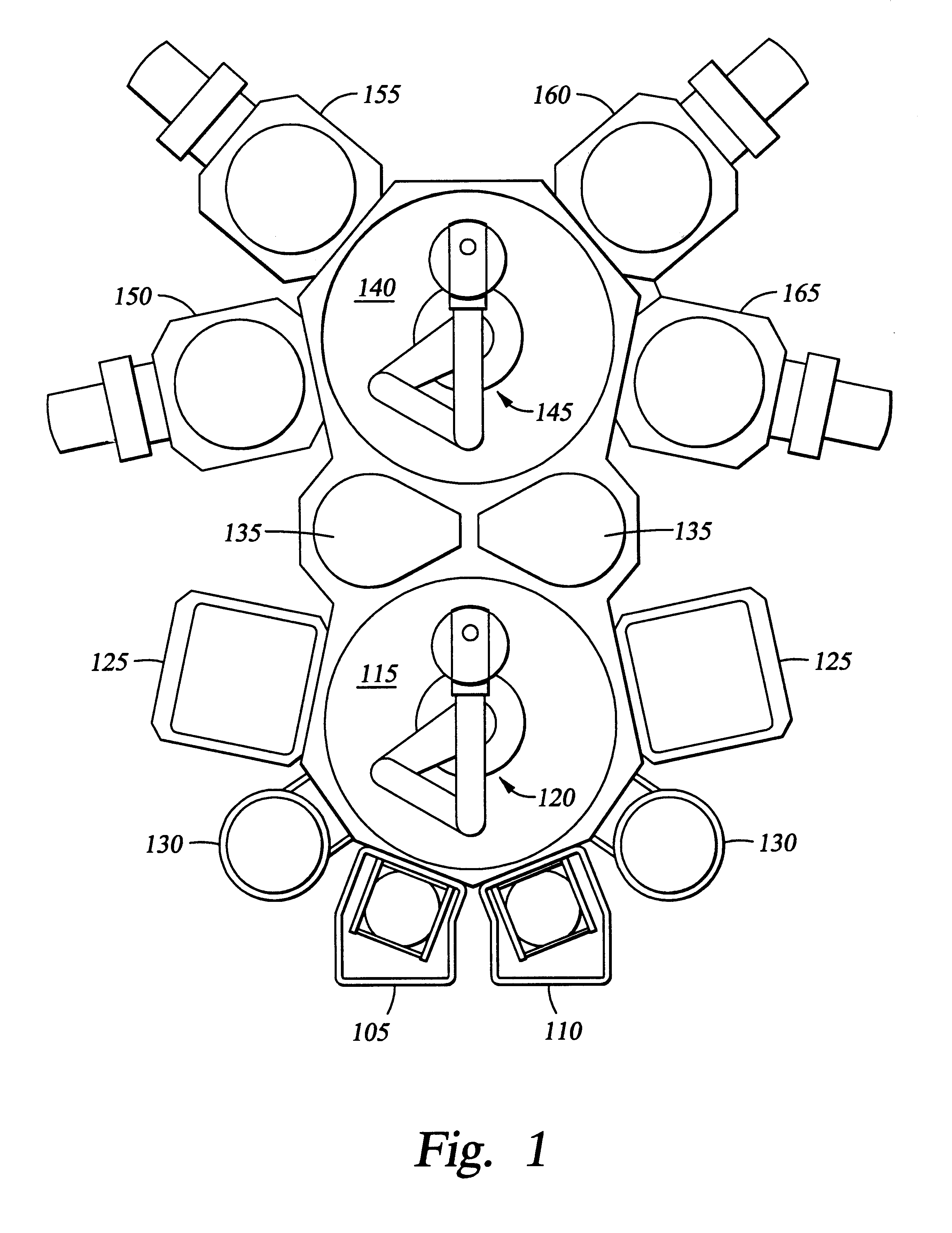Method and apparatus for automatic calibration of robots
a robot and automatic calibration technology, applied in the field of automatic calibration of robots, can solve the problems of manual calibration, manual calibration, and introduction of human error, and achieve the effect of reducing or eliminating the dependence on the ability of human operators and fast, accurate and reliable calibrations
- Summary
- Abstract
- Description
- Claims
- Application Information
AI Technical Summary
Benefits of technology
Problems solved by technology
Method used
Image
Examples
example
FIG. 3 is a schematic view of a central transfer chamber having a plurality of processing chamber attached thereto. The example describes a calibration of the robot from an initial rest position in a transfer chamber to a target position inside of a processing chamber 160. The auto-calibration of the robot is initiated by a measurement of the distance between the emitter 202 and the receiver 204 and their respective positions. The processor 206 receives the signals from the emitter 202 and the receiver 204 and processes the information using the auto-calibration algorithm. To simplify the optimization process of the auto-calibration algorithm, the free space of the processing system is defined by the operator as combinations of simple geometric forms instead of the calculated complete free space. As shown in FIG. 3, the user-defined free space G* of the transfer chamber and the load lock chamber is defined as the union of a circle 302 and a rectangle 304. By defining the free space ...
PUM
 Login to View More
Login to View More Abstract
Description
Claims
Application Information
 Login to View More
Login to View More - R&D
- Intellectual Property
- Life Sciences
- Materials
- Tech Scout
- Unparalleled Data Quality
- Higher Quality Content
- 60% Fewer Hallucinations
Browse by: Latest US Patents, China's latest patents, Technical Efficacy Thesaurus, Application Domain, Technology Topic, Popular Technical Reports.
© 2025 PatSnap. All rights reserved.Legal|Privacy policy|Modern Slavery Act Transparency Statement|Sitemap|About US| Contact US: help@patsnap.com



